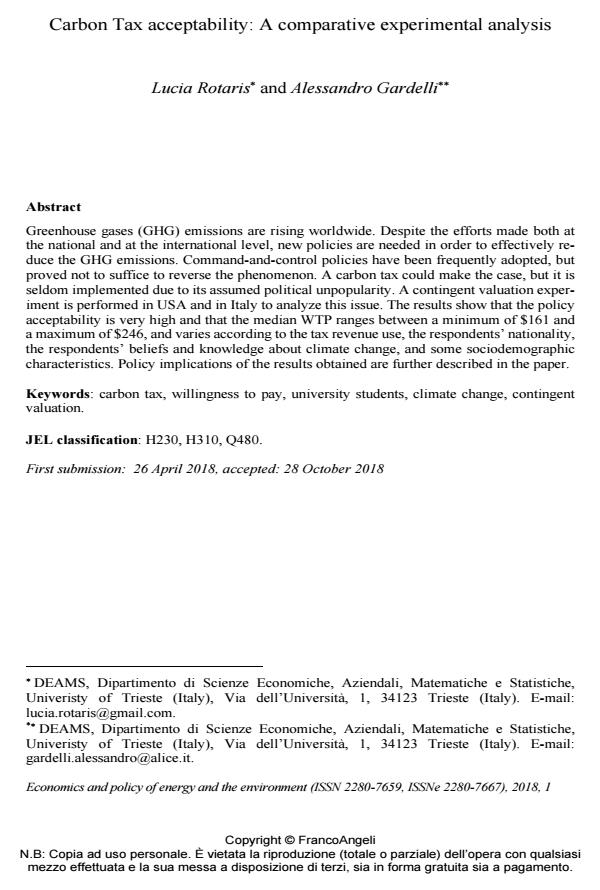Carbon Tax acceptability: A comparative experimental analysis
Titolo Rivista ECONOMICS AND POLICY OF ENERGY AND THE ENVIRONMENT
Autori/Curatori Lucia Rotaris, Alessandro Gardelli
Anno di pubblicazione 2019 Fascicolo 2018/1
Lingua Inglese Numero pagine 16 P. 117-132 Dimensione file 232 KB
DOI 10.3280/EFE2018-001005
Il DOI è il codice a barre della proprietà intellettuale: per saperne di più
clicca qui
Qui sotto puoi vedere in anteprima la prima pagina di questo articolo.
Se questo articolo ti interessa, lo puoi acquistare (e scaricare in formato pdf) seguendo le facili indicazioni per acquistare il download credit. Acquista Download Credits per scaricare questo Articolo in formato PDF

FrancoAngeli è membro della Publishers International Linking Association, Inc (PILA)associazione indipendente e non profit per facilitare (attraverso i servizi tecnologici implementati da CrossRef.org) l’accesso degli studiosi ai contenuti digitali nelle pubblicazioni professionali e scientifiche
Greenhouse gases (GHG) emissions are rising worldwide. Despite the efforts made both at the national and at the international level, new policies are needed in order to effectively reduce the GHG emissions. Command-and-control policies have been frequently adopted, but proved not to suffice to reverse the phenomenon. A carbon tax could make the case, but it is seldom implemented due to its assumed political unpopularity. A contingent valuation experiment is performed in USA and in Italy to analyze this issue. The results show that the policy acceptability is very high and that the median WTP ranges between a minimum of $161 and a maximum of $246, and varies according to the tax revenue use, the respondents’ nationality, the respondents’ beliefs and knowledge about climate change, and some sociodemographic characteristics. Policy implications of the results obtained are further described in the paper.
Parole chiave:Carbon tax, willingness to pay, university students, climate change, contingent valuation.
Jel codes:H230, H310, Q480 H230, H310, Q480.
Lucia Rotaris, Alessandro Gardelli, Carbon Tax acceptability: A comparative experimental analysis in "ECONOMICS AND POLICY OF ENERGY AND THE ENVIRONMENT" 1/2018, pp 117-132, DOI: 10.3280/EFE2018-001005